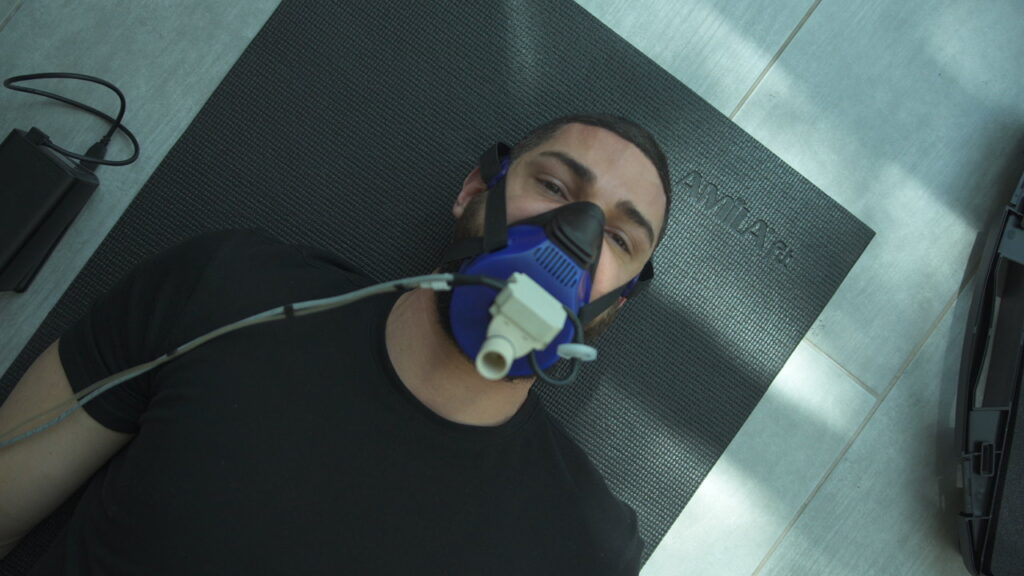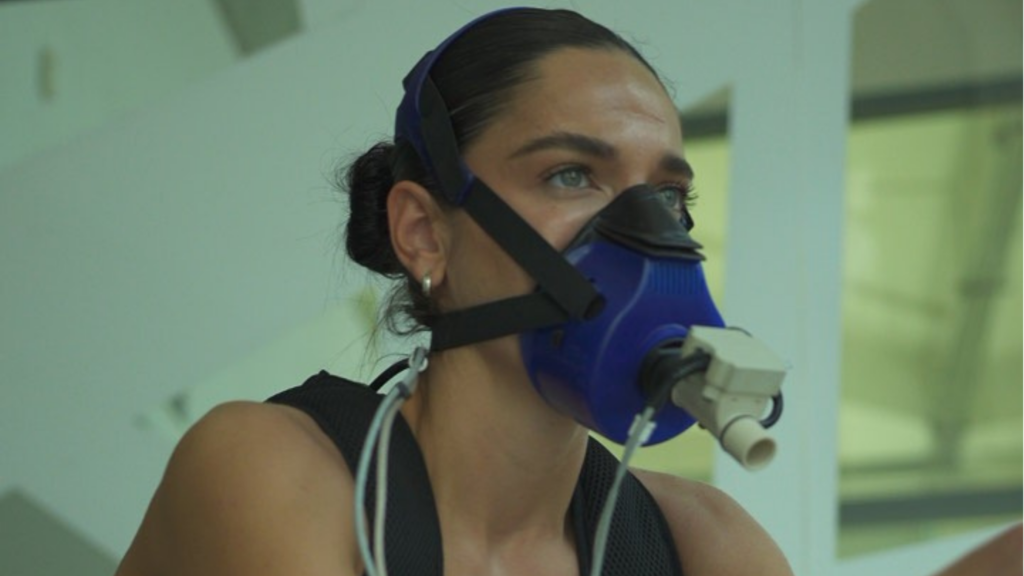This blog reveals the five most common mistakes that hinder VO₂ Max improvement and provides actionable strategies to overcome them using PNOĒ insights.
VO₂ max – the maximum rate at which your body uses oxygen during exercise – is a crucial marker of aerobic fitness and longevity. Improving it can literally make your body “younger,” as VO₂ max is a precise indicator of biological age. Yet many people unknowingly sabotage their VO₂ max gains. Below we outline the top five training errors that can stall or even lower your progress, and how to fix them. By avoiding these mistakes – from overtraining to ignoring personalized data – you can unlock better aerobic performance and maximize your VO₂ max improvements.
1. Overtraining Without Adequate Rest
Pushing yourself too hard, too often, is a sure way to hinder VO₂ max gains. While it’s true you need intense training to boost VO₂ max, doing high-volume or high-intensity workouts without enough rest can lead to chronic fatigue and plateaus. Overtraining elevates stress hormones and accumulates “fatigue factors” (like inflammation and cortisol) that actually reduce performance. In extreme cases, your cardiovascular system doesn’t fully recover, leading to a reduced aerobic capacity (VO₂ max) when pushed beyond its limits. In short, more isn’t always better – constant hard training without recovery can backfire.
How to fix it: Make recovery part of your program. Schedule at least 1–2 rest days per week and listen to your body’s signals (e.g. persistent soreness or a drop in motivation are red flags). Remember that fitness improvements happen during rest, when your body repairs and adapts to training stress. By allowing recovery, you’ll come back stronger and continue improving your VO₂ max instead of burning out. Tracking metrics like heart rate variability (HRV) can help gauge recovery – consistently dropping HRV is a sign you may need more rest. Most importantly, trust that smart rest will accelerate your VO₂ max gains, not hold you back.
2. Lack of Periodization in Training
Training without a structured plan – or not periodizing your workouts – is another common mistake that limits VO₂ max improvement. If you do the same type of workout week after week (or randomly mix high and low intensity with no plan), your body can stagnate. VO₂ max, like other fitness traits, responds best to a strategic balance of stress and rest. Periodization means dividing your training into phases (for example, base endurance, build, peak, and recovery/taper), each with a specific focus. Without periodization, you risk over-emphasizing one type of training or never allowing a proper recovery phase, both of which blunt your progress.
Why is this a problem? Studies show that well-structured training programs yield greater performance gains than non-periodized routines. Periodization ensures you gradually overload your system and then allow it to consolidate gains. For instance, you might spend several weeks building an aerobic base (longer low-intensity sessions to raise fat-burning capacity), then introduce interval training to push VO₂ max higher, followed by a lighter week to let adaptations take hold. Skipping these planned cycles can lead to plateaus or overuse injuries that stall your VO₂ max. Essentially, your body needs variety and progression – not a constant grind at the same intensity.
How to fix it: Implement a periodized training plan. Divide your training calendar into blocks focusing on different goals (endurance, high-intensity intervals, etc.). Incorporate personalized training zones in your plan – for example, know your Zone 2 (easy aerobic) vs. Zone 5 (VO₂ max interval) intensities and use them appropriately. Research confirms that targeted blocks of training can significantly boost VO₂ max compared to haphazard training. Plan recovery weeks every few weeks to recharge. If you’re unsure how to periodize, consider consulting a coach or using data from a metabolic test to identify where to focus (more on this later). A well-periodized program will steadily challenge your system and then allow it to adapt, resulting in consistent VO₂ max improvements.
3. Poor Recovery Habits (Sleep & Rest Deficit)
Even if you avoid outright overtraining, neglecting recovery on a day-to-day basis is a major mistake. This includes insufficient sleep, lack of rest days, and inadequate stress management. Remember, your aerobic capacity increases not just from how hard you train, but how well you recover. If you skimp on sleep or never take a day off, you short-circuit your body’s ability to adapt. For example, exercise creates microscopic muscle tears that need time and nutrients to heal stronger. If you keep breaking down muscle without giving it a chance to rebuild, you won’t gain the endurance or VO₂ max improvements you’re after. In fact, persistent fatigue from poor recovery can depress your performance; athletes who don’t recover properly see declines in endurance and speed despite continued training.
Beyond muscles, recovery also restores your hormonal and metabolic balance. Hard training raises cortisol and adrenaline; constant hard training keeps them chronically elevated, disrupting sleep and metabolism. This can even slow your metabolic rate over time. One study on elite cyclists found that a heavy 6-week training block with insufficient recovery significantly lowered their resting metabolic rate and HRV (signs of prolonged fatigue), but these metrics rebounded after a proper recovery period. In short, if you never truly let your body rest, you’re often taking one step forward, then two steps back.
How to fix it: Prioritize recovery as an integral part of your training. Aim for 7–9 hours of quality sleep per night, since deep sleep is when growth hormone spurs muscle repair. Schedule regular rest days and easy days to allow for active recovery (like gentle yoga or walks to boost circulation without straining your system). Pay attention to your nutrition around workouts – consuming protein and carbohydrates after intense sessions helps kick-start the recovery process. You can also incorporate techniques like stretching, foam rolling, or meditation to reduce muscle tension and stress. By improving your recovery habits, you’ll notice better workout quality, steadier progress, and a higher ceiling for your VO₂ max. Remember, rest is not a luxury; it’s a necessity for improvement.
4. Inadequate Nutrition and Fueling
Training hard for VO₂ max gains but failing to fuel properly is like trying to build a fire with wet wood. Without adequate nutrition, your body simply cannot perform or adapt at its best. A few common pitfalls are: low overall calorie intake, insufficient protein, poor hydration, or unbalanced macros (like skimping on carbohydrates during heavy training). VO₂ max workouts (such as intervals) are demanding and primarily powered by carbohydrates – if you attempt them on a low-carb or calorie-restricted diet, you won’t be able to push to the intensity needed, and you risk breaking down muscle for energy. Over time, chronic under-fueling can even put your body in “conservation mode,” slowing your metabolic rate and making improvements harder. Research has shown that when athletes don’t eat enough to support their training load, their resting metabolism drops and performance suffers.
Micronutrients matter too. For example, iron deficiency is notorious for reducing endurance performance because it lowers your blood’s oxygen-carrying capacity – directly impacting VO₂ max. Lack of electrolytes and dehydration can impair your heart rate and energy production. Simply put, food is fuel: to maximize aerobic gains, you need to consistently give your body high-quality fuel and enough of it. Inadequate nutrition also impairs recovery (as discussed above) – if you finish a workout depleted and don’t replenish, your next session will be subpar and you won’t hit the VO₂ max training targets you’re aiming for.
How to fix it: Approach nutrition as part of your training plan. Ensure you’re eating sufficient calories to match your activity level – do not chronically diet while trying to improve fitness, as a large energy deficit will undercut your VO₂ max potential. Emphasize protein intake (to rebuild muscles and mitochondria), healthy carbohydrates (to restock glycogen for hard workouts), and plenty of fruits/vegetables for vitamins and minerals. Hydrate well, as even mild dehydration can reduce aerobic performance. It’s wise to get a handle on your metabolic needs: for instance, a metabolic analysis can determine your exact resting metabolic rate and how many calories you burn at various intensities. PNOĒ’s test, for example, measures your metabolism and fat/carbohydrate burn efficiency, then provides personalized macronutrient recommendations. Using such data, you can tailor your diet to optimize performance – ensuring you have the right fuel to power VO₂ max improvements. In summary, treat nutrition as the foundation of your training: fuel the engine to fire on all cylinders.
5. Ignoring Personalized Data and One-Size-Fits-All Training
Perhaps the most fundamental mistake is failing to personalize your training. Every individual’s physiology is different – from your baseline VO₂ max and metabolic rate to whether you respond better to high-intensity intervals or longer steady workouts. If you ignore your personal data and blindly follow a generic program (or copy what a fit friend is doing), you might be training inefficiently or even counterproductively. PNOĒ’s team has observed that the optimal VO₂ max training strategy can vary significantly from person to person. Some people plateau because they focus on the wrong type of workouts for their body, while others train in the wrong heart-rate zones because they never did an assessment to find their true aerobic and anaerobic thresholds. Not knowing your own numbers – whether it’s your VO₂ max, lactate threshold, heart-rate zones, or even how your metabolism shifts between burning fat and carbs – means you’re guessing instead of progressing.
For example, you might be doing intervals at a pace that is actually below your effective VO₂ max intensity, so you’re not stimulating improvement – essentially a wasted opportunity. Or you could be doing only long slow runs when your limiter is actually a weak anaerobic capacity, meaning you’d benefit from some speedwork. Conversely, perhaps you’re an individual who needs more low-intensity volume to raise your aerobic base, but you’re doing too many HIIT sessions because you heard they’re good – and thus not improving. Ignoring these individual differences is a major hindrance. It’s also important to track your progress with objective data; without testing, you might not notice subtle improvements or know when you’ve hit a plateau.
How to fix it: Embrace personalized training. Start by getting a reliable fitness assessment – ideally a metabolic analysis or VO₂ max test – to establish your baseline. This will reveal key data like your VO₂ max, anaerobic threshold, personalized training zones, caloric burn rates, and even an estimate of your fitness-related “biological age.” With this information, you can tailor your program: for instance, train in the correct heart rate or pace zones to truly challenge your VO₂ max when needed, and avoid training too hard on days meant for aerobic base building. Personalization also means adjusting your plan based on feedback: if you see your progress stall, tests can show whether you need to change something (e.g. add more recovery or tweak nutrition). PNOĒ’s clinical-grade breath analysis is one tool that provides all these insights – it measures 23 metabolic biomarkers including VO₂ max, metabolic rate, and fat burn efficiency. Utilizing such insights takes the guesswork out of training. The bottom line is that you are an experiment of one: the more you customize your training to your unique physiology, the faster you’ll see VO₂ max gains. Don’t settle for one-size-fits-all plans.
Maximize Your VO₂ Max Gains with PNOĒ’s Guidance
You don’t have to tackle it all alone. Avoiding the mistakes above will set you on the right path, but the ultimate way to optimize your results is to base your training on solid data. PNOĒ offers metabolic testing and expert analysis to identify your personal strengths, weaknesses, and ideal training zones. With PNOĒ’s metabolic analysis, you receive a comprehensive report on your VO₂ max, aerobic vs. anaerobic thresholds, metabolic rate, fuel usage, and more – essentially a blueprint of your engine. Using these insights, you can adjust your program to train smarter, not just harder, and ensure every workout counts.




